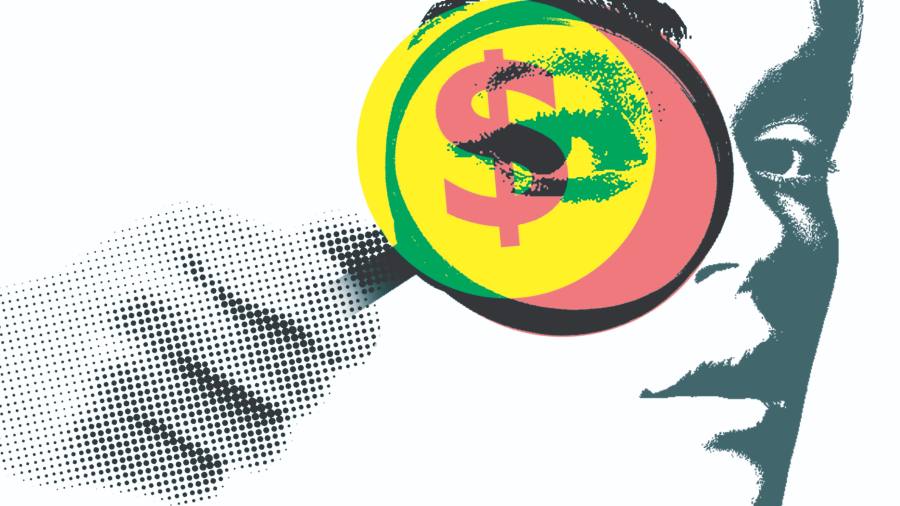[ad_1]
Last week, amid the Robinhood market drama in which the trading app’s users produced wild swings in several stocks, I stumbled on one of my favourite small books, Networks of New York: An Illustrated Field Guide to Urban Internet Infrastructure.
At first glance, that title might seem distinctly dull — and not obviously connected to the current Wall Street fireworks. The book was penned almost five years ago by Ingrid Burrington, a Brooklyn-based artist turned social commentator, because she was frustrated by so few people truly understanding how the internet works.
Most notably, while we are all addicted to cyberspace, the majority of us are ignorant about the physical connections that enable the internet to work. Networks of New York explains how to decode the urban features of the internet around us: it suggests that, say, we follow the squiggly symbols that are painted on our streets to track the path of underground internet cables (just as a hunter in a jungle might track animal droppings to find a herd). It also describes data centres sitting inside anonymous, unmarked buildings on Broadway and Avenue of the Americas.
That might seem like trivia, but this exercise shows two things: first, how prevalent the physical underpinnings of the “disembodied†internet are; and second, how selective human vision can be. Most of us, for example, are not even aware that there are internet squiggles on the street (I certainly wasn’t). But once you read Burrington’s guide, they are hard to ignore. As she writes, the internet infrastructure “is not so much invisible as it is hard to see; it hides in plain sightâ€.
What does this have to do with Robinhood? A lot. In some senses, digital brokers such as Robinhood have delivered once unimaginable transparency in finance, just as cyberspace has given us a seemingly magical window on the world. The Robinhood app makes it childishly simple for users to track asset prices, not least because “digital confetti†dances across the screen when you make a transaction.
The internet has also made it easy to watch investor debates about asset prices and to see which fees are being charged to trade stocks (fees that a site like Robinhood, which is commission-free for customers, can then undercut).
This radical transparency means that investors can track market distortions and trade against them; the dash by small investors to buy assets such as silver or GameStop stock, for example, was partly driven by internet users’ research into which shares institutional investors were shorting, or betting would fall. (The small investors wanted to take the opposite side of these trades.)
Yet even as small-time investors have celebrated the fruits of this transparency, many of them have been selectively blind to how the plumbing of finance actually works. Until last week, it seemed that most had not questioned why Robinhood’s services could be commission-free. Answer: it is paid fees by the companies that execute its trades because they hope to squeeze out some profit of their own from the action.
Those companies, however, include some of the very institutions the small investors were attacking.Â
Retail investors were also unaware that when share-price volatility rises, a broker like Robinhood has to post cash with a clearing house — and to meet these demands it can curb trading (which is precisely what happened last week, to the Reddit army’s apparent shock).
The piece of the financial markets that ordinary investors see, in other words, is just the tip of an iceberg of transactions, interlinkages and prices. This convoluted plumbing tends to be ignored until something goes wrong — just like the real plumbing in a house.
This selective blindness is nothing new. Outsiders have always been at a disadvantage compared to City of London or Wall Street insiders when it comes to understanding how financial infrastructures work. But what is striking about our current age is that the internet creates the impression — or illusion — that outsiders can peer into the system and rally together to stage protests in cyberspace.
That, in essence, is what happened with the Reddit crowd on Robinhood, when they ganged up on some hedge funds.Â
Yet precisely because most Reddit investors did not grasp the full scale of linkages in the financial system (such as the relationship between Robinhood and the clearing houses), their onslaught on its infrastructure appears ultimately to have failed.
It was not because the facts were concealed by any nefarious plot — 10 minutes’ online research would have shown how brokers are constrained by clearing houses. But most small-time investors were too mesmerised by the movement of share prices on their cellphone screens to look into the dull arena of financial plumbing — just as internet users are blind to the cables under the streets.Â
The internet has created a peculiar blend of new transparency and lingering opacity in our world: we cannot assume that the former will remove the latter unless we open our eyes to what lies beneath — in finance or anything else.Â
Follow Gillian on Twitter @gilliantett and email her at gillian.tett@ft.com
Follow @FTMag on Twitter to find out about our latest stories first. Listen to our podcast, Culture Call, where FT editors and special guests discuss life and art in the time of coronavirus. Subscribe on Apple, Spotify, or wherever you listen.
[ad_2]
Source link






